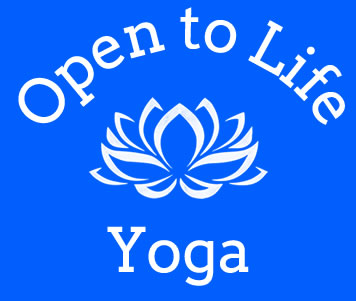
Module 3: “Kumu” The Teacher and Student grow together as a tree.
Techniques Training and Practice 25 hours
Level one and two asana Syllabus
These hours will be a mix between:
1) analytical training in how to teach and practice the techniques, and
2) guided practice of the techniques themselves.
Morning Asana Practice will focus on up tempo warming and stimulating practices: standing poses, forward bends, inversions, backbends, hand balancing.
Afternoon Asana Practice will focus more on calming and quieting practices: hip openers, forward bends, twists, restoratives.
Level one and two Asana’s
The trainee will practice and learn the key poses in each category of asana (standing poses, forward bends, backbends, twists, and inversions) and will begin to develop a relationship to both the form and the function of these different categories.
We will bring a focus to sequencing. How do we create sequences for all levels classes, beginners, mixed levels, intermediates and more advanced.
Level one and two Asana’s
Tadasana, Surya Namaskar, Adho Mukha Svanasana, Uttanasana, Lunge pose, Adho Mukha Vrksasana, Pincha Mayurasana, Parsvakonasana,Trikonasana, Prasarita Padottanasana,Virabhdrasana two, parsvottanasana, Ardha Chandrasana,Vrksasana, Uttihita Hasta Padangusthasana,Eka Pada Bhekasana, Eka Pada Rajakapotasana, Bakasana, Vasisthasana,Virasana, Setubandha Sarvangasana,Dhanurasana,Ustrasana, Urdhva Dhanurasana, Supta Padangusthasana, Sukhasana,Ardha Matsyendrasana, Baddha Konasana, Triangmukhaipada Paschimottanasana, Agnisthambasana,Sarvangasana
Awareness Through Movement lessons will be used to bring more sensitivity to our practices: you will begin lying on the floor while you scan your awareness over your body, sensing and feeling your own form and self image. You will then be given precisely structured movement explorations that involve creative thinking, sensing, moving, and imagining. Many of the explorations are based on developmental movements we all made as children. Some are based on more abstract explorations of joint, muscle, and postural relationships. Lessons consist of comfortable, easy movements that gradually evolve into movements of greater range and complexity. After an Awareness Through Movement class, participants often comment that they feel much younger, move and think with greater ease, and experience the world around them as more vibrant. These Awareness through movement lessons are specifically designed and chosen by Skeeter to allow all Students and Teachers of Yoga access to a deeper dimension of sensitivity and subtle energy.
Morning and afternoon meditation
Morning and afternoon pranayama
Teaching Methodology 7.5 hours
The use of voice in Teaching Part three, Understanding the difference between Active and Passive commands and how to use these to guide students into General form of the pose.
Uplifting Philosophy and Heart Themes, Learning how to use positive themes and messages in directing students into General Form of Poses.
Observing Students before Adjusting, learning to recognize functional general forms of poses, Using observation before either verbal or hands on adjustments moving from the inside out, how to see this and guide a student to experience it.
How to create powerful Demos Part one
Verbal Adjustments part three
Hands on Adjustments part three
Sensitive, Stabilize, Adjust SSA
Creating Invariants to increase stability and freedom
Integrating the three paths of yoga in Asana practice: Karma, Jnana and Bhakti
Anatomy and Physiology 5 hours
Subtle body: kundalini, Nadis, types of prana
Reviewing the curves of the spine
The psoas muscle and connection to the emotions.
Spenhoid bone, hyoid bone and the connection to the core.
How to create strength in the core during flexion and extension.
Na Iwi (The Bones)
In Hawaii the mana or spiritual essence and power of a person is believed to reside in their bones, their iwi. For native Hawaiians, it was important for the bones of a deceased person to complete their journey and return to the Earth to impart their mana.
The skeletal anatomy makes up the most fundamental structure of our bodies, strongly connecting us and grounding us deeply to the Earth. In this section, you will learn the basic foundational frame of the body, learn major bones of the axial and appendicular skeleton, major landmarks of the shoulders and pelvis as well as Hawaiian, Chinese and Western perspectives on the constitution and function of the skeletal body and an easy and therapeutic 5 minute Qi Gong self massage form designed to awaken energy from the center of the bones each morning.
Yoga Philosophy, Lifestyle and Ethics 7. 5 hours
Discussion on Bhakti
Bhagavad Gita Overview
The Guna’s
Bhagavad Gita first six chapters
Bhagavad Gita second six chapters
The boundaries of Teacher and Student, Student and Teacher
Practicum 2.5 hours
Creating a class theme and sequence for an all levels class
Practice teaching
Receiving and giving feedback
Observing others teaching
Assisting students while someone else is teaching
Homework/ reading list
Hike up to a waterfall!!!
Love your body.
Kiss yourself in the mirror.
Poised for Grace by Dr. Douglas Brooks
Bhagavad Gita, Stephen Mitchell translation
Plant a tree…..and commit to its care for life!
Tantra Illuminated by Christopher D. Wallace
Try something new……Standup Paddling…….Surfing, eating vegan?
Patanjali’s Yoga Surtras…..any translation
Anatomy of Movement by Blandine Calais-Germain
Review of Notes made during class.
Journaling each morning and each night……. and or a Swim in the Ocean
